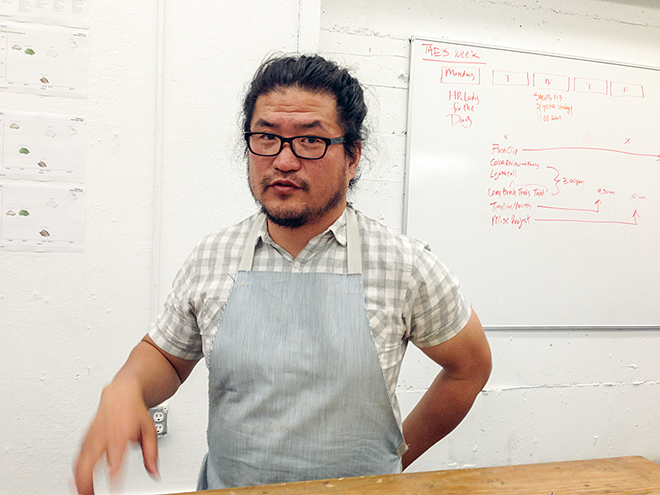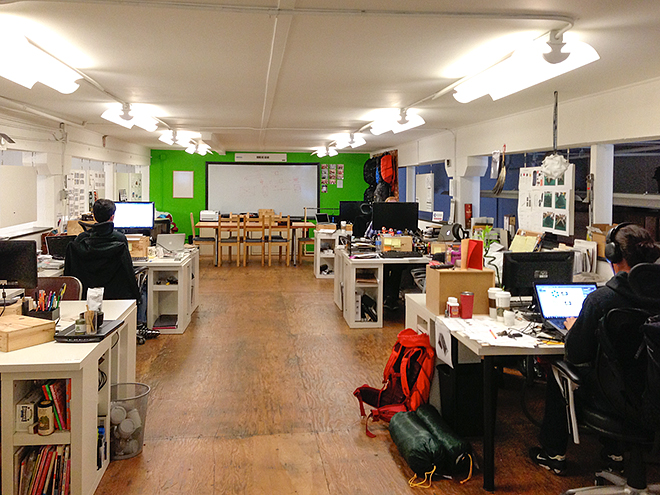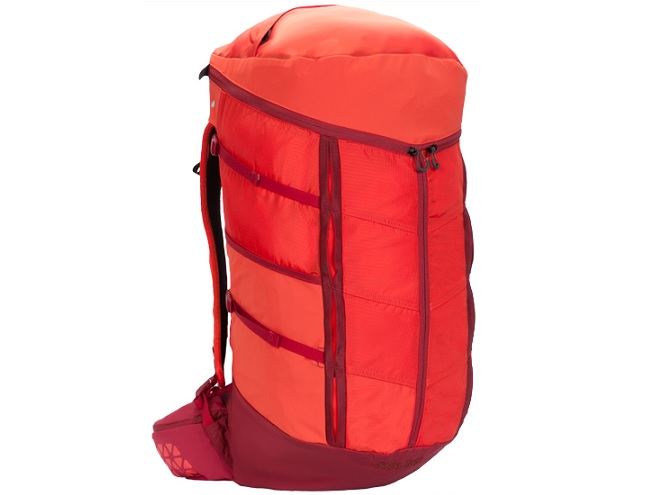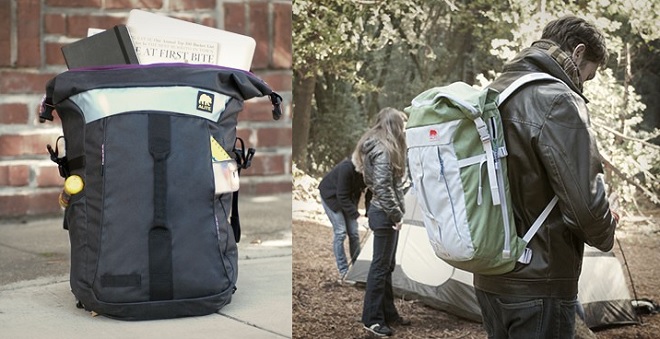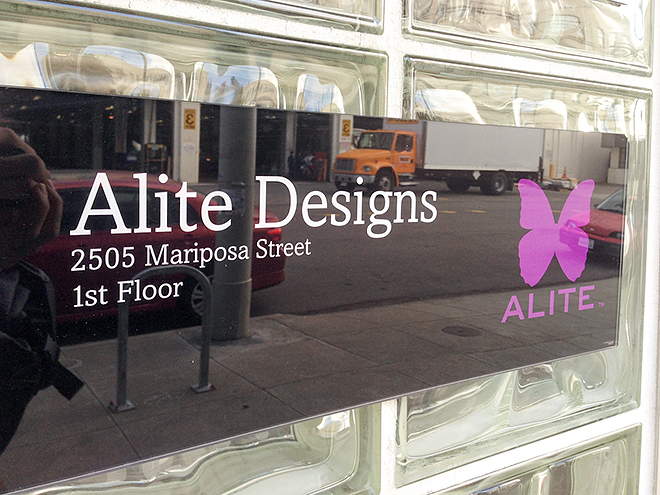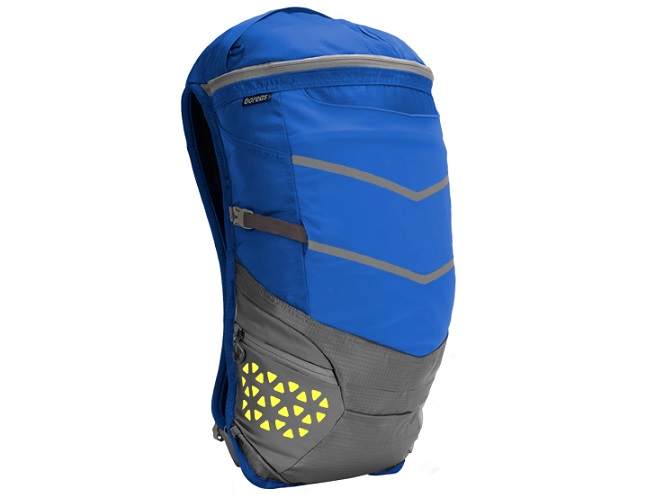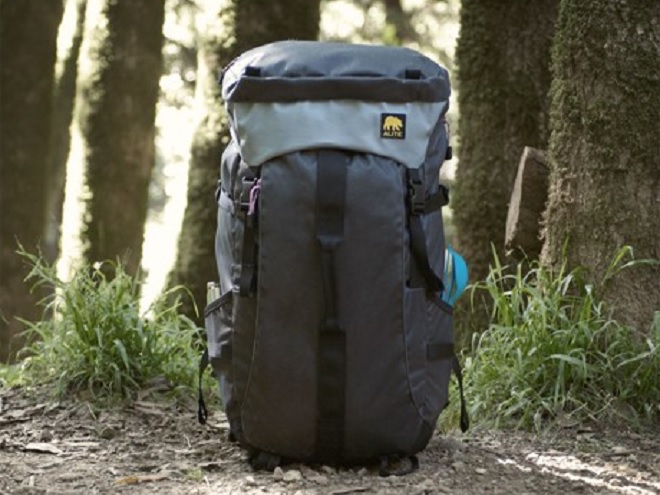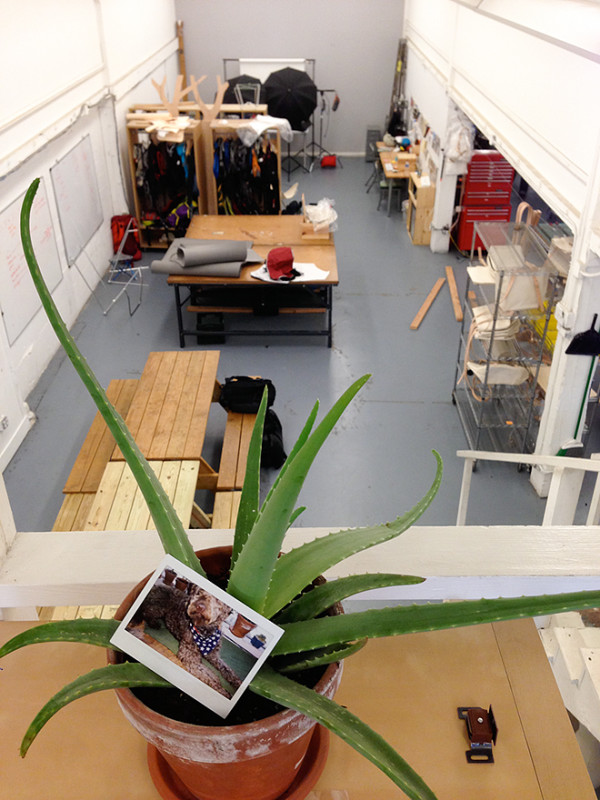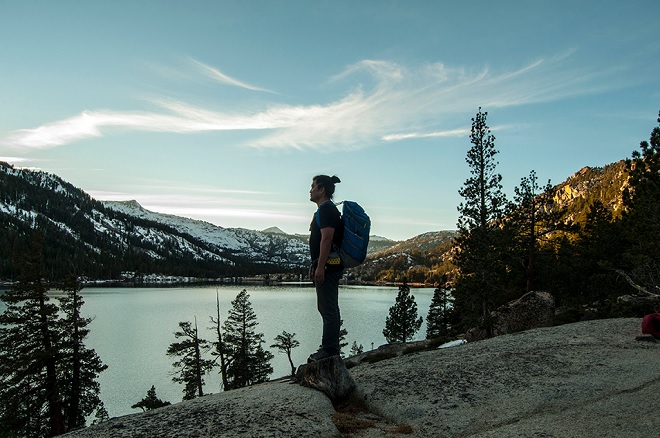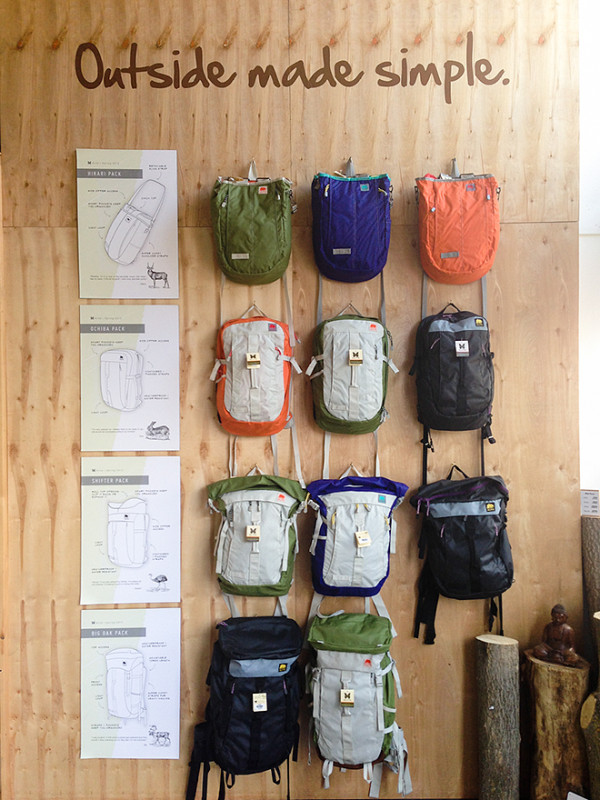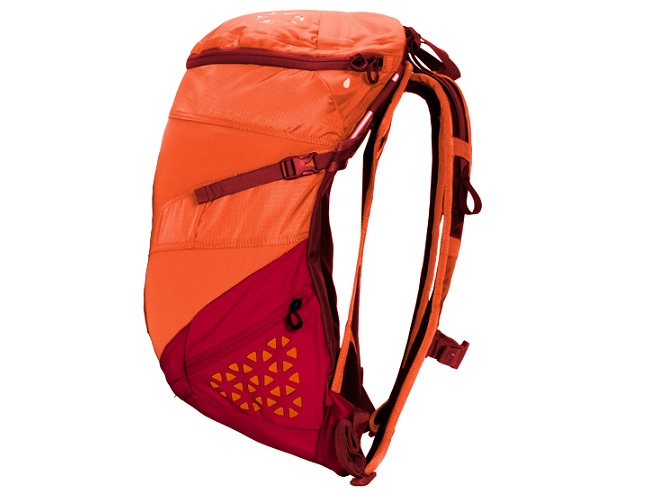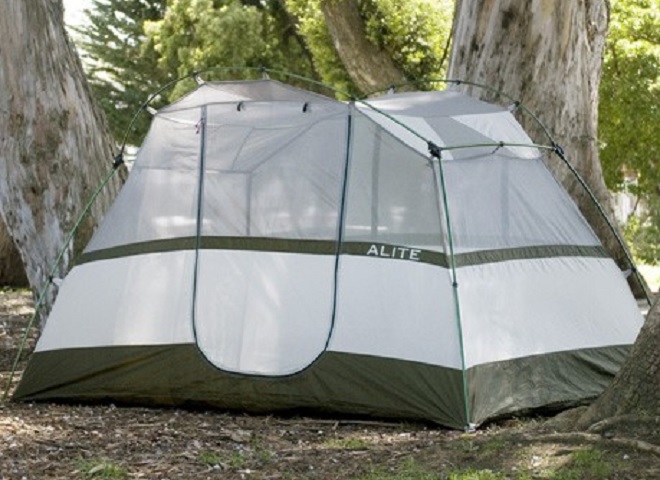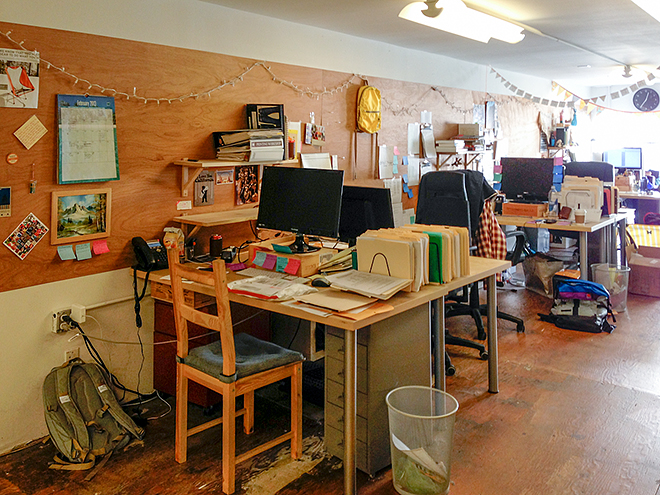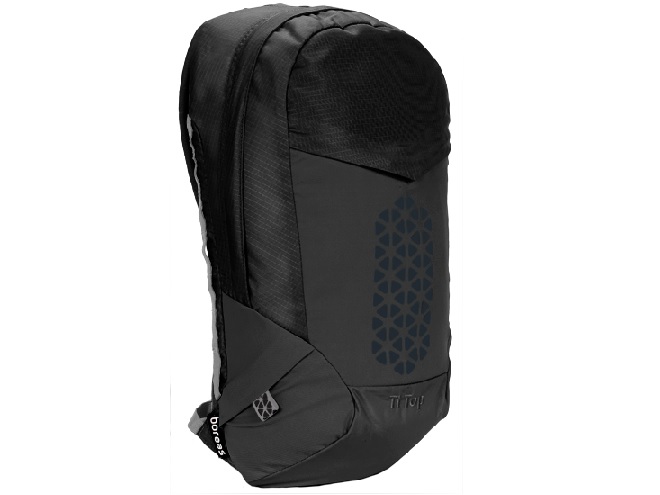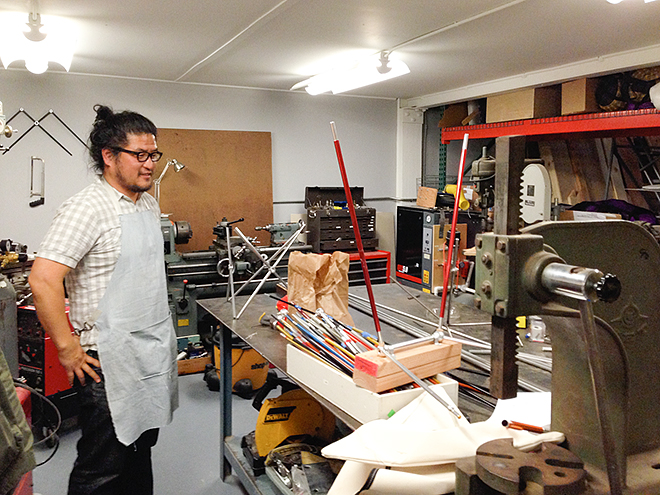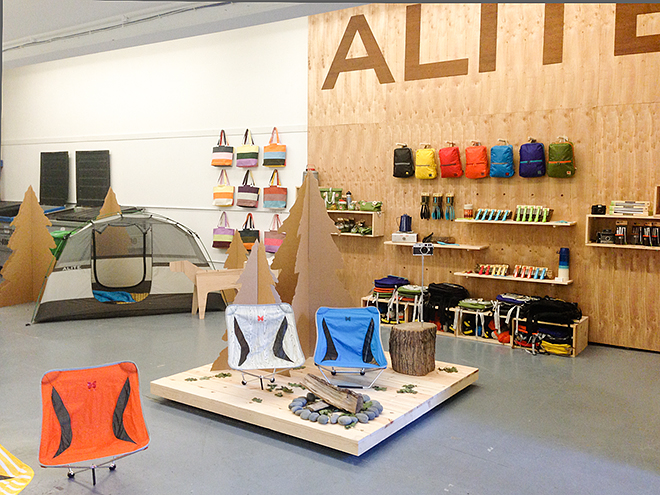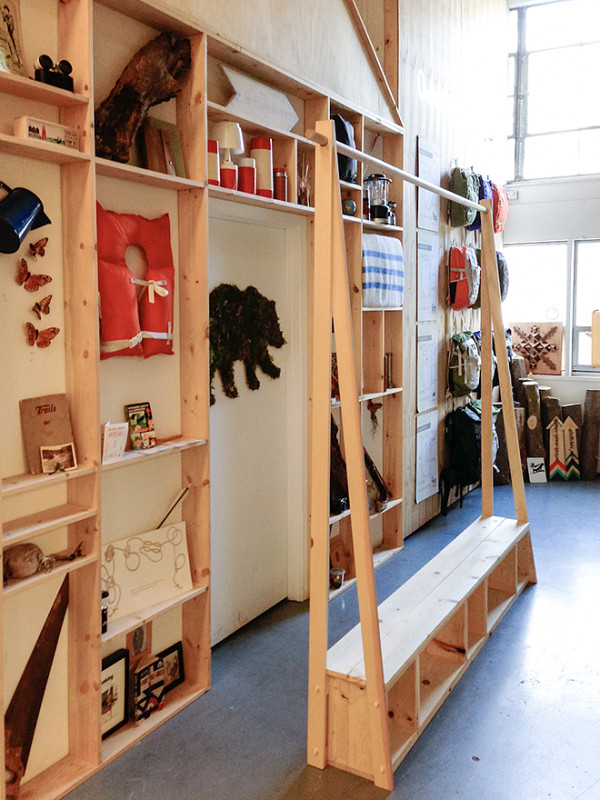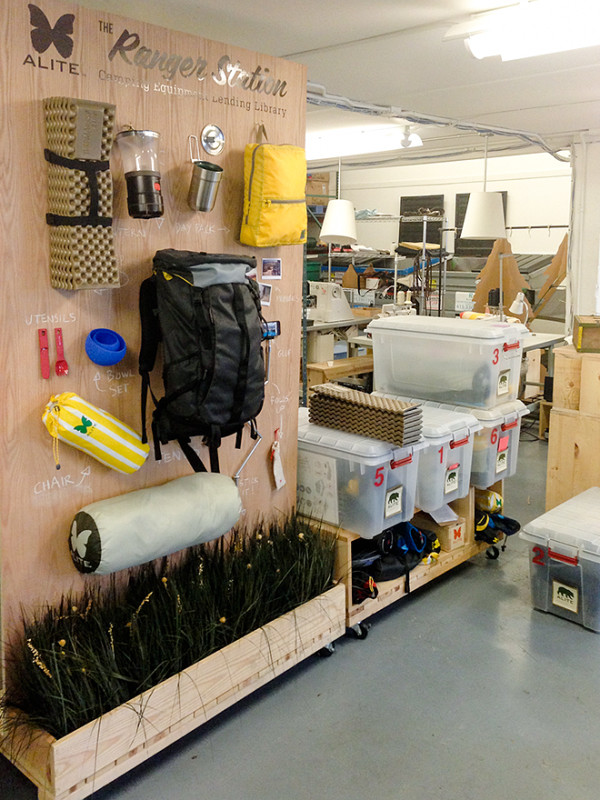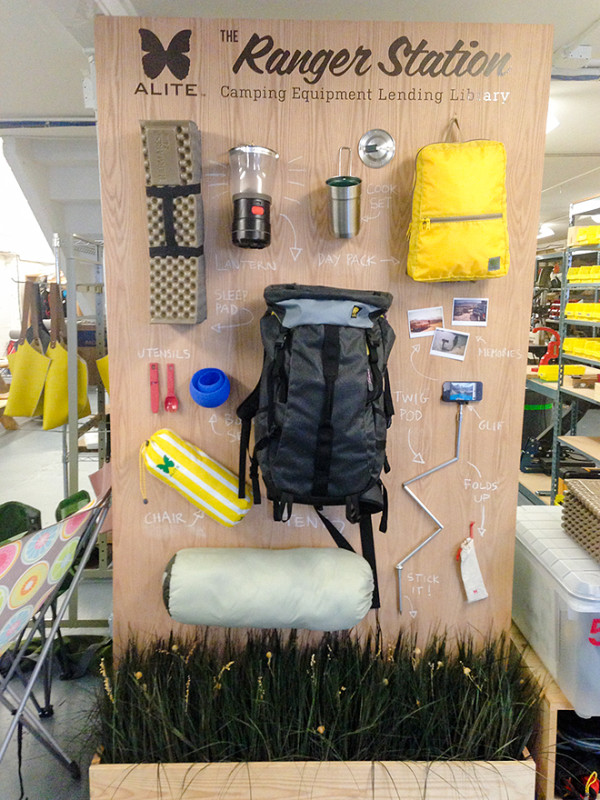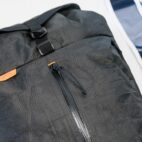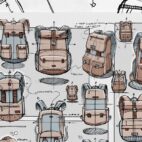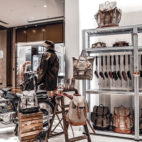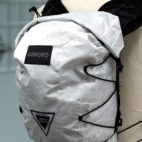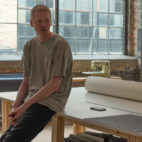Interview with Tae Kim :: Part 2
Welcome to the second and final part of our interview with Tae Kim, one of the key minds behind Boreas and Alite. There’s talk on design processes, startups, car design, Alaska, sex toys and plenty more.
We pick up where Part 1 left off, so without further ado let’s dive in…
—–
Ando: So is the kind of outside work you do, like the Jeremy Jones backpack, a bit for Timbuk2 I think, a few things, is that you just making sure you’re kind of calibrating your standards and you’re seeing where else it applies or is that you doing favors for friends or is that you keeping some cash coming in or…
Tae: It’s favors for friends. I used to make a lot more money working for The North Face but it’s favors for friends but I’ve always felt like – the way my mind works and the way I like to design, I like to work on about 200 products a year and so –
Ando: Wow.
Tae: “…if I don’t get that, my mind starts to drift to women and drinking and so I really kind of love working on a bunch of things.”
Tae: So, with Jeremy Jones when he came, called in and he’s a friend of ours I just didn’t want to like…
Ando: Let that go.
Tae: …yeah, like let that go. Just to be able to work with him and that backpack, like it was – we interviewed him so much and he gave us so much feedback, that’s the pack that he would be proudest of, like that’s his pack. So that’s an interesting experience ‘cause I used to design a lot of outdoor gear for athletes at The North Face. So I had missed like –
Ando: That interaction and deep connection.
Tae: Using an extreme user.
Ando: Yeah, right.
Tae: And so that was one part that we can’t say no to and then with Eddie Bauer, another friend, Damien is one of the VPs, he came calling and they just needed a little help with their First Ascent direction and there’s not many tent designers out there, so we were glad to help with that.
Ando: So do you kind of get your other designers involved in some of those projects?
Tae: Well, with Alite we have one assistant designer and with Boreas we just hired two assistant designers, so that’s Jessie and Todd.
Ando: Yeah, it’s still all quite fresh in that way.
Tae: Yeah, we use them for like the freshness side of it. So Jessie did a lot of the form design and color direction for the Bootlegger series and then Todd’s working on this tent over here and so they have within me a mentor that won’t let them go astray, yet they’re trying to apply and then this is their first project that they’ve applied their rough process. So next year, next season, they’ll do even better, you’ll see them more and more in our website and things like that, telling people about their process but for us almost everyone contributes to the design process. I may as a creative director, I do some fair amount of designing but my ability is to analyze the landscape and understand brand and figure out the opportunity. So I’m coming up with the suspension can pop in and out of a backpack so how can Boreas really capture that as far as the next level of products and so, you know, I worked out kind of all the basic engineering and design aspects of it and then I worked with some of the younger people and they just…
Ando: Excellent, to realize it.
Tae: They realize it, yeah, but it’s their first project so I’m curious to see what the next level of stuff is because Todd has never designed a tent before, so.
Ando: Have you worked with someone that you consider a peer on a project in a while or is it usually now you kind of feel like you’re the shepherd guiding from behind almost?
Tae: I think most projects it’s weird, like I’m very comfortable working with people and I let them into the design process. So pretty much almost all of the projects are a group kind of thing…
Ando: Collaborative, yeah.
Tae: And I make it very easy for everyone involved to collaborate and take ownership and so…
Ando: What are some tricks, other things you do that you think really make that happen?
Tae: “Most people don’t really know how to brainstorm. So I do a lot of teaching how to brainstorm.”
Ando: Do you have top three takeaways for better brainstorming or anything like that?
Tae: I mean they’re very trivial but honest to God the people are so critical at brainstorming sessions and then people when they’re put in a situation where they’re working with designers, they feel like they have to be a designer. So we’re working with our salesperson and he sometimes feels like he has to come up with a design to even talk to us about new products. So we let him know that like no, no don’t worry about coming up with a design. We would rather know where the problems are.
Ando: Yeah, excellent.
Tae: So I think successful brainstorming is really focusing on problems that people have and if people are more in tune with that and problem solve for that, you’re going to innovate.
Ando: It’s funny, it’s almost like focus on the objectives and then let the designers work out the tactics, like the designers work out how to get there but from you guys we need to know where’s the friction, what are you trying to get out of this.
Tae: Yeah, it’s all about the customers. So some examples, as far as brainstorming I give people – I do a test brainstorm topic. So, one topic is how do you communicate amongst cars. So currently we communicate by honking…or giving the little finger. So then, as archaic as forms are on a car, like with all the cellphone – come up with five things that you think would be great additions or better ways to communicate.
Ando: Yeah, could the horn become more expressive, could it have different moods, yeah.
Tae: Yeah, exactly or I’d love, let’s say, pawnshop LED signs that say come buy this… So if I –
Ando: Here’s my digits…
Tae: …if I sound cool with a girl, you know, just try to tell her. So there are many different things and people have it in them because they’re abusers, right, and so if you focus on the problem and then try to solve for that, that will lead you to come up with so many different ideas.
Ando: So did it feel funny – I mean you kind of described designing for people. With Jeremy Jones you actually had a person. With most of your product is it more like it’s a cluster of people, do you set a persona, do you sort of say he is he or do you try and identify someone and this is the Mike Smith bag, you know, this is…
Tae: It’s a little bit complex. So for Alite we’re looking at winter products. We have a very, very healthy Summer business but we’re trying to figure out how do we control the Winter line. So then we go back to our customer and say what do beginner outdoor people do in the wintertime. And we’re finding out that they love to snowshoe, they love to take walks and they don’t want to go snowboarding or skiing for the first time. So we’ve been brainstorming around a lot and we’ve come up with tons of innovations.
Ando: Yeah, great.
Tae: And it just all starts with like what do –
Ando: So it’s a type of person.
Tae: Yeah.
Ando: It’s like let’s get our head around what that type of person wants.
Tae: So that’s one example. But there are other tricks that you could use to do innovation. So rather than brainstorm you might, if you’re good, if you could see things you might see that one very common way of innovating is you take two products that people use together but they don’t know they use them together. You just combine the two, right.
Ando: Yeah.
Tae: So there’s – on Kickstarter you’ll see many things that were kind of combined from two things.
Ando: That’s so true.
Tae: So that’s an interesting thing because you don’t want to carry many products. You just want to take a few things, right.
Ando: Yeah, totally.
Tae: So there’s this whole arsenal of the way to design and then also if a market is saturated, if everyone’s making the same thing that corporations get really stuck and the designers who work for those companies get really stuck and they’re so busy coloring things up or adding, making it cheaper or adding more features that they never get a chance to look back.
Ando: I remember it being described as when you work for a large company you see how the job is done and you try to make it 10% better. When you work for a startup you see what the job is and try and work out how it should be done. It’s a really different approach.
Tae: So then that approach in a saturated area, like you could easily innovate, like good designers you give them the right amount of time, they could make better products.
Ando: Yeah, totally. Yeah, it makes a lot of sense. And so you’ve had, you’ve come out of – so time with Ford, time with North Face, kind of moved into Timbuk2.
Tae: A little bit, yeah, part-time. They really help support like starting in my businesses.
Ando: Oh, excellent.
Tae: So I was working part-time for them and then I helped to restructure their design department, so I hired all these people and we designed a few things for them.
Ando: Ah, excellent, and so you sort of had that consultancy where I think you’ve even got some fun kind of bedroom devices or something. So is it just pretty much areas where it’s oh that would be fun, is that kind of what’s guiding you, there’s no grand plan, there’s no sort of mass thing?
Tae: It’s people, like it’s people and problems and opportunities. So this thing came out because my friend Janie, she used to work in the sex toys industry and she was like, it really sucks, it’s all run by dudes and it’s all – it breaks after a month and no one wants to return it.
Ando: Yeah, totally, yes.
Tae: She was the expert, she was like Jeremy Jones, and so just talking to her we would meet like every other week for drinks and we would just talk and then it sounded like a –
Ando: A challenge.
Tae: “It seemed like a challenge, it seemed like, wait, mom and pop people designing bad sex toys; okay, I think there might be an opportunity.”
Tae: And so I knew a bunch of Stanford robotics engineering that were interested in starting a business. So, I just got them out together and we were just friends through our meeting and then they came out with so many things and I’m more of the facilitator and it was their first time walking in this process that I do with them. Then they had so many amazing ideas and it was all possible and so – but we said, well we only have four months for this tradeshow that’s coming up, what’s the easiest but most interesting thing?
And so one of the Stanford engineers had made this thing, made the toy more interactive and so he put a turkey baster on a sex toy and as you pressed it the motor would increase by how much pressure there was. So it felt like you were controlling it and then on top of that this other engineer knew that I really was into music and DJ-ing and sampling, so he put a sampler on the thing so if you gave it a rhythm it would loop it. So the sex toy person is like, oh my, this is so much better than anything out there. So then we ran with it, we found some investors, friends who could throw in like, you know, $10,000, $20,000 and we made the prototype to take it to a tradeshow and had good success, it’s doing really well. I just didn’t have time to be a part of it. So I just helped start it. But it’s been really interesting; like that process is the same for Alite, that process is the same for Boreas, and it will be the same process for anything else we do…
Ando: It sounds like you are just absolutely thriving in San Fran, it sounds like it would be hard to take you back and dump you back in Alaska and kinda remove you from the community.
Tae: Especially when there’s only three girls there. This is really a great place, but I am really influenced with my travels. So, Amsterdam is a great place, Tokyo, Korea and the funny thing is that I was born in Korea but I grew up in Alaska so I speak very limited Korean. But most outer gear is made by Koreans. In the 90s, 80s and 90s, Korea was very influential and really exploding on the Nike athletic gear movement. They made most of that stuff in Korea.
Ando: And then also set up in Vietnam.
Tae: And after the 80s and the 90s when their labor rate started going up because of, most countries that start out sewing, they move into manufacturing, then into technology so that’s where Korea is. So they’re now all over the place. And America went kind of through the same phase. So, very interesting to be interacting with that and then Korea is the number two outdoor market, so we do really well in Korea. Japan is sort of fourth, Germany is the third. So, just starting to in the last couple of years be able to travel and again it’s because it’s about people it’s so important to make sure that our products do well out there.
Ando: So do you try and move on tradeshow cycles or do you just try and…
Tae: We do but I have friends like the – pretty good friends with the Freitag brothers. So they were out here when they first, right before they started the company. One really good friend used to work for them as an intern when they were like this. And so it was inspiring to go visit them in their new space.
Ando: They seem to be kicking on again, kind of had another reinjection.
Tae: Well they always start other businesses, weird businesses. So I think they were trying to start a laser light company. So they’re still integrated to design and Freitag wasn’t the first thing that they wanted to start, they just kind of stumbled upon it. And yet it was so beautifully done, it was almost like a one hit wonder kind of feeling where they were like, well Freitag is done, we should start some other things. So then they’d come back to it and they realized, wow, there’s a strong foundation that can be even bigger than what it is. So, I think they’re just getting their footing and so it’s just amazing to see.
So like, to be able to explain this tent, going back to the way Boreas products were done before, the Boreas tents utilize really common materials, the packs use very common materials, and we put in stitch lines and this kind of skeletal structure into the products so that it becomes stronger.
Ando: So it’s not just relying on the usual pole line, you’re actually introducing a sort of a medium element.
Tae: It’s almost like sail design. So we’ve designed everything to be the lightest material possible without it being too disposable. So, and then there’s some technology and stuff that we can’t tell you just yet. That will change kind of how people think about tents.
Ando: Yeah, right. That’s exciting.
Tae: Yeah, it’s the philosophy. By using really common materials and designing it in an interesting way that’s like the key thing I think. Sometimes design, if you give designers like five things, five cool toys they’ll include it into the product.
Tae: “If you could take a step back and say don’t add any cost, don’t use new glamorous material but on your own design ability try to come up with something new. I think that’s when it gets really good.”
Ando: Yeah, right, okay. It does make sense. So, how much – I have a question, do you have time to scratch yourself?
Tae: Oh, all the time. I have a pretty good balanced social life and how I work. So, I have a lot of great help and I don’t have any problems delegating, it’s a team effort and everyone’s helped out. I don’t run the business, so, but we talk through it.
Ando: And so, you have, is it like you have partners and things?
Tae: So Tom and Lyosha and I are partners. We’re original partners but there’s many more partners now. But those are the original partners. So Lyosha runs – is kind of the partner that runs Boreas, Tom is going to start the new company Tiny Tools, and then I manage the Alite side. But we’re here as advisers and mentors rather than like CEOs or Presidents. And so that’s what these guys do.
Ando: Yeah, which is awesome. So, it’d be fair to say the main thing driving your brands to get better is just that kind of curiosity and desire to fill out that need and make something interesting for it or what?
Tae: That’s one part. Again going back to the historical reference, the outdoor industry used to be so thriving, amazing and it feels like there’s a little bit of stagnation in the industry and it can use companies like us, starting new things. So, you know, it’s just amazing that in four or five years there’s us but there’s Outlier, Poler, all these companies that are doing this more interesting perspective. I think the more the better and that’s always been my perspective.
Ando: It’s almost like the heritage trend has brought outdoor into the city but now you guys are trying to get the city back into outdoor.
Tae: Yeah, no I just think that we’re onto something and I think the design of like – like design is not about designers, so much timing associated with it.
Ando: Yeah, that’s really true.
Tae: So like, there was an iPhone called the Newton by Apple a while back but it just wasn’t the right time. So the same thing with all the stuff that’s happening now. Because people change and new generations come in. It’s just a different thing now.
Ando: Even platforms like Kickstarter, like that sort of thing, they really give a helping hand. Even the culture of the startup community in the Bay area and you’ve sort of got this area where there are crew that have a bit of spare time, a bit of spare money and they’d love to go and mentor a business, enjoy it, do whatever.
Tae: It’s funny ‘cause we don’t – we actually don’t work with a lot of outdoor veterans. There’s not many here. So it’s an interesting perspective. I don’t think I could get them to leave their jobs and take a chance like this. But for us, you would not believe how much technology and just kind of current things that we’re using and I could safely say that we have one of the top design groups here. At The North Face they wouldn’t give me a machine shop and nor were they willing to give me sewing machines. So this is like the best shop.
Ando: So you’re probably loving the reemergence of the make movement as well and that kind of democratization of innovation tools and active prototyping.
Tae: Yeah ‘cause at the purest level I got into this because, again, fabric doesn’t lie and the designs are so functional that there’s just – we’ve kind of avoided a little bit the fashion side of it, we’ve avoided hard goods computer box designing. This is the best type of design. So it’s amazing we can make a living out of doing this. It was very fortunate. I’ve had a lot of design friends gone off and done other things and I just think I’m in a position where this is the best type of product design.
Ando: Is outdoor your connection because of the Alaskan upbringing?
Tae: When I left Alaska I had a lot of options to get away from the outdoors. But you know, I wouldn’t say it jumped out at me and said you must be a tent designer. I have an understanding of the type of design I wanted to do and it was very functional based, and as you go through your own self kind of exploration I did the car designing and it was really stressful. It was all about form, and I learned a lot but the thing that drew me more and more was seeing the artisans like spray clay off of the cars. And I was like, it takes seven years to actually make a car so I’m going to apply to grad school, I’m going to get on out of the Midwest. I have discovered this program called Stanford Product Design and it’s where like IDEO kind of started. So I’m gonna go try it and it has this Bauhaus movement so I wanna try it and then I did it. Again, very functional type of designing and then applied to a bunch of places. One of them was North Face. I think I only applied to one outdoor company. And when I got the job and I got a few job offers I’d looked at them and gone I know outdoor design, I know camping. I don’t live or breath it but could this opportunity mean that I could use my background and then this new love of functional design? And then sure enough –
Ando: It just came together.
Tae: “Yeah, so for seven years that’s what I did, loved it and most of my time over at North Face was a very humble existence.”
Tae: They would give us the passes to Squaw Valley Ski Resort, like a whole season pass. And I’d be skeptical, like you mean I could use this and not get consequences? I just take some time off and it’s all good? You guys will pay me? It was always like that and then I have a really good friend, Kasha, and she’s like the world’s best telemark skier and I remember reading about her when I was in college and then I met her and I was just blown away. And so I’ve always had an appreciation for this industry and my love for the industry and how much it can be even better, like how I want it to be healthier, that’s a lot of times driving the stuff.
Ando: Yeah, that’s nice. That is good.
Tae: Yeah ‘cause with Alite the more people I could get who had never gone outside, the more I could get people into the outdoors, like it’s great for the industry and then this new way of travelling. And I think that with the packs that they were so saturated in the outdoor, everyone was using Osprey or Arc’teryx. I think it was really refreshing for us to come in and show slightly a little different perspective on it.
Ando: And we felt that, just watching the buzz around the Carryology community, contributor community, it was definitely whoever these guys are, they know stuff. It’s like this is good, it’s understanding concepts not just products, conceptually knowing how to make that. It’s good, it’s good. It’s obvious in the product.
Tae: Oh, thank you.
Ando: So are there other designs you wish you had the technology to make, other times when you’ve sort of got visions and you then go looking for the technology for it?
Tae: I wish I could weld here. We have seen really great ideas for welding. I think we made some good strides on our stuff. Our whole perspective on welding was that instead of trying to weld the whole bag, we wanted to just put a pocket where everyone needs that like safeguard pocket. So that took a while to figure out, especially with our factories and stuff because it was kind of simple in a way but it took a little aha moment to get to that. But for us, I would love to figure out welding more.
So we have some really great jacket technologies that I think similar to Boreas on the pack side. We think that we could kind of innovate on the jacket side. So that would be one thing and we’re just so into the – everyone is into the 3D printing and we’re starting to integrate that into the outdoor type of design. The 3D has been really interesting and I’m speeding up everything for us.
Ando: So is it just fine components and that sort of thing that you’re printing or are you trying to print for form to understand form or…?
Tae: A little bit of both. Currently, printing is for form and space kind of feel. But it’s getting so good and some of it helped us with function. And then we just, you know, figured out how to do metal, rapid prototype of metal. We take a 3D plastic form and then convert it into metal so that I can now use it. So we have the ability to rapid prototype pretty much anything that’s in our head because working with factories and working with our current type of iteration, it slows down a lot.
Ando: Yeah, it’s sounding like you’ve been working, working, working on design process speedups and then once you click over in the production that’s the lag for you guys; that’s what’s distancing your ideas from getting out there faster.
Tae: Yeah, and then we do iterations to flesh out ideas. So we do want to get really fast. The factories, there’s this whole section of commercialization so a design could be fully done but it could take you forever to commercialize it, right, and then there’s this beauty for the way we commercialize. We have a lifetime guarantee on everything and so to actually commercialize something to last a lifetime is just a whole other thing.
Some of the Made in America stuff, you could buy them, it’s very expensive and people are down with making in America but the factories here don’t have the technology to make it last for a lifetime.
Tae: “So I could take a Made in America bag and I could just, with no tools I could take it apart and unravel the whole thing. So that’s a little bit lost on people I think.”
Ando: Yeah, and so are you – several factories, do you just have a couple of great partnerships you like to –
Tae: Like two, three, that’s it. They’re all friends.
Ando: Excellent. So how do you try and commit those guys to you guys so they really understand what you’re trying to do? Is it you fly over and spend a while or is it…?
Tae: A little bit of both, they’re always here. They’re always coming over here, we’re talking with them. We’re trying to get them integrated into – Korea’s so technology connected but they don’t use Skype that much so it’s really just like, you don’t use Skype? ’Cause the language barrier is really big because they like everything written out.
Ando: Yeah, right. You feel more confident about reading than –
Tae: ‘Cause yeah, they’re going through it. So imagine if you guys learned Spanish and someone was speaking to you in Spanish, you’re like instead of Skype let’s write it out so then I could pull out the dictionary and stuff –
Ando: Yeah, totally.
Tae: ‘Cause it’s really amazing – but we do a little bit of both, you know; it’s getting better now because they really want to help us commercialize.
It’s hard for them to iterate for us but because most American companies are cutting more and more designers out they make the factories design. So that’s why all the tents all look the same because all the factories are designing them. So for us we want to do our part, we want to iterate here. We want to make everything here so that it’s final design and if – it’ll be great in a couple of years if we choose to say let’s make it overseas, let’s make it here in Chico, California or let’s make it in this place we want the flexibility to –
Ando: To do that.
Tae: Yeah, to do that.
Ando: It makes a lot of sense, that’s cool. And so with that rapid iteration and the kind of up to 50 prototypes kind of vibe, how many designs get kind of really close and then just don’t get out? Many or do you sort of knock it off?
Tae: It’s not like this magical milestone moment. It’s like, you’ll start with 20, 30 designs and then after the first sessions you’ll be like oh yeah, most of it’s done. And then now from that let’s realize it, let’s draw – render it out and see if it’s a good thing and then it gets phased out.
So you start from the back with lots of ideas and then at the end stage, for us we’re so small it’s good to just only put out a couple of projects. I think for both companies, we just really only want to put out like two or three products that we really get behind.
Ando: Yeah, I like that; that is good.
Tae: But we start with so many, we have pretty much – after we take pictures of it and then throw it out. We just don’t have the space…
Ando: To even hang onto them.
Tae: Yeah.
Ando: Yeah, that’s cool. So one of the questions the guys had was with Alite. Do you ever sort of go alright, here’s our product and then just go no too serious, detune, detune? Is there almost that process of treating it, as your gear freak tendencies sort of go into it and you come out with something and then you’re like simplify, simplify, get it back, get it back to its essence?
Tae: Yeah, that happens a lot. We’ve designed stuff where it’s too complicated for people. So our tent, we wanted to make a very square tent. And almost like a living space, right. So that’s why we called it In-law Outlaw tent. In-law, like if your friends come and visit they could sleep in that tent, keep all their junk in there. It was utilizing the latest tent technology but we started lending it out to friends and I would get phone calls in the middle of the night –
Ando: How do I do this?
Tae: I don’t know how to – how you set this up, and it was their first time setting up a tent. So no matter how much I told them how to set it up they just weren’t going to get it.
So then we rethought the whole thing and so we did some tent collaboration with the Free People, the American clothing company and those turned out beautiful. I got a chance to come and make it more simple. But our whole idea is would they like tents, I can make a really strong pop-up tent, you know, automatically it sets up. I know there’s a bunch of them in Europe.
Ando: Yeah, some are using like pneumatic poles, air poles sort of thing, yeah.
Tae: I think I could – that would be our next kind of innovation area, and so I really want to come up with – the tent area, again, is really saturated. Everything kind of looks like the Hubba Hubba. So we’re going to rethink it and see what we come up with but Alite will be really easy to set up and then with Boreas it’ll take a very Mexico eco-tourism kind of thing. It won’t be a four-season tent, it will be very summer eco-tourism South East Asia feel but it’s gonna be, like the technology behind it and it could also be lightweight but it’ll be affordable with slightly different takes on things.
Ando: Yeah, right, yeah that’s nice. So I guess just one of the last questions, is it seeds of ideas, is it often there’s an idea seed and it’s almost which business does that suit or is it –
Tae: No.
Ando: You said it is normally starting with the people, like who’s that audience and then finding something for them.
Tae: There’s a good separation between the two and it’s, the young designers that work for me really kind of influence a lot of that so I’m kind of more the old man now.
Ando: Pointing and prodding and…
Tae: I see the opportunity, so I think next year you’ll see all their stuff and for us it’s just nice that this connect from the outdoor industry is right now. And I showed people the shop and kind of what we do on Instagram and all of my designer friends are all on it and they’re saying what we set up here is just a dream come true for them.
So once it starts getting – so we’re, you know, both companies are growing 50%-plus to 100% every year, so there’ll be a time when we’ll have our footing structure down, it’ll be easy to hire those amazing designers that I used to work with or want to work with. I’m just laying a good foundation down and then we’re just embracing really good functional designers.
Tae: “So, my goal isn’t to be the head designer of all these companies. I’d like to be the creative director, like a coach that helps support this great environment and each company.”
Tae: There’s certain people that I want to hire to be the designer ‘cause it fits their personality. There’s this one designer for Alite that we’re looking at and that guy’s personality fits. His humor is way over the top, very whimsical and he knows all about this emotional tie-in with outdoors and so I think sometime this year we’ll be able to hire him.
Ando: Yeah, that’s exciting. So it feels like personally your goals each day aren’t for this one driving thing. It’s kind of just building this feel and this mood and this kind of excitement.
Tae: Yeah, it’s just to be able to hang out with all these –
Ando: Good crew…
Tae: Yeah, crew and stuff. Joel and I have been friends for a while and so just to have the ability to have him work for one of the companies and you know he’s going to be a leader in companies, just to have that ability is awesome.
Ando: That’s nice.
Tae: So friendships and personal stuff and professional stuff, for us it’s all kind of related. We had jobs we just didn’t like before. We always try to disconnect the personal and the professional a lot of times but you know, he went on a wedding recently and had a honeymoon and we’re like why didn’t you tell us, we would have paid for – ‘cause I know his honeymoon would have been the type of travel that Boreas would have –
Ando: Loved to share.
Tae: …if you can do a few pictures with the Ti Top…
Ando: I’m not sure what his fiancé at the time would have thought, like oh by the way it’s now a work trip!
Tae: Oh check your email, it’s fine. I’m not gonna stop you. He would have loved it and he would have been paid for it.
Ando: Yeah, that’s a bonus.
Tae: “So the core of it is that we want to have a healthy business, but we don’t take ourselves too seriously about that.”
Tae: Everyone has a say in kind of how things are done but there’s leadership in it. A lot of people will say, you know this one company everyone gets a say in it; if you have that, that company is never really going to move forward ‘cause it’s going to be like a big government. But there are leaders that were really encouraging to take a leap of faith and really move things.
Ando: And do that. I was reading a post from Metagramme, a graphic design agency, and they were saying that so many brands chase consistency, thinking that’s what it’s about but that’s not what consumers care about, they care about cohesion.
Tae: Yeah.
Ando: It’s just got to be cohesive and it feels like that’s kind of what you’re chasing and that’s why you can let everyone do their stuff and you know they’re a cultural fit, you know they’ll make a cohesive message and it doesn’t have to be top down consistency, this is exactly how we do it.
Tae: We failed a lot. We failed like – I don’t want to get into it but we’ve messed up a lot. But it’s about moving forward, right. So many people are so afraid to fail, you know?
Ando: Yeah.
Tae: So I think that’s – the good thing about us is that we encourage people to take a chance and if you fail once or twice you just learn from it. So this all didn’t start with this poetic creation. It was just some friends who wanted to work together and knowing people, like having some industry veterans and knowing how to make good products, seizing that opportunity to create things for our friends and for us to be able to work together.
Ando: Yeah, that’s exciting, isn’t it? Anything else you can think of that you’d love the carry world to know about? We’ll be talking about, you know, ways to try and share learning and stuff going forwards.
Tae: We have barbeques every Friday so if anyone wants to stop by and then take some – we really want to help foster just a good movement. So even if it’s like competition or whatever, we just really think that we’re all in it to have this – we value kind of the outdoor experience and I say the outdoor as not in like the limited outdoor trait, all of this stuff is just very functional products. So we love what we’re doing and we want to encourage people to do similar stuff. If they’re interested in getting into this or design or understanding how to do this or make something we’re always open for that. Just letting them know that’s kind of what this hub is all about.
So we’ve helped a lot of people start their businesses and our hope is that if we continue this there’s this movement that’s going to happen there. And here there’s not a lot of people in the office today but there’s about 20 of us just doing our thing. Five years ago we just – myself and a friend in my apartment.
Ando: It’s not that great, is it? If you’re doing what you love to do, yeah it’s nice, it’s really nice.
Tae: Just setting up all of this stuff, that’s been really interesting. [Indicates sewing machines] These are all sewing machines that I’ve bought when I was working at The North Face and these are a couple of thousand dollar sewing machines, even though they’re really old. So these – but funny, it’s like these work the best, so straight, walking foot, zigzag, overlock, overlocking foot, and then these are the new machines I got and this is what I use for production. Then I hire a sewer to come in and sew all this stuff but I have to maintain them and so it’s always a love/hate battle, but it’s good. It’s like guys don’t get to work on things too much like cars and stuff anymore, they’re all computerized. But these are all really amazing machines.
The whole history of sewing is just amazing, industrial revolution and how a country moves from third world status on up. It all starts with like sewing machines.
Ando: Yeah, cut and sew. Yeah, it is.
Tae: And it’s usually the women already know how to sew because they’re in a poor country, they’re already making clothing for themselves so there’s this trained group and the women bring home all the money in a third world level transitioning. So it’s just fascinating.
Ando: Yeah, it is exciting. For us personally, I don’t know if you saw the ‘Made In…’ post, but it’s like there’s this obsession right now with patriotic buying and it feels like it’s kind of missing the point ‘cause there’s just – there’s incredibly awesome people in every country of the world and there’s these people kind of hauling their country out of poverty and changing the world, just getting this abject poverty away and it’s this ladder to a kind of flourishing. Then to kind of say they shouldn’t get a chance ‘cause we should always buy, you know, American or Australian or British or whatever, it’s kind of like oh what? But when it’s made – like when you’ve got that tangibility then that’s a good part of the process, that’s when it’s a good reason.
Tae: Yeah, I think it’s a complex thing and it’s hard for me to say what works and what doesn’t because there are so many arguments to either or –
Ando: Each side, totally.
Tae: And so for me all I know is that from my end the factories that I work with pay everyone really well, most of them are unionized and my Philippine factory is the same one that Patagonia uses and Mountain Hardwear and all these places and all the workers are on Facebook. They’re all friends of mine, so it’s like I could see in their lives. I could see in our interactions that they’re so proud to be working with me and I’m so proud to have my stuff made by them. And so it’s just this amazing thing, and we’re lucky because technical gear like this, it just can’t be made in crappy factories. So, we’re really fortunate to be in this area.
But for us, some of the worst factories that I’ve seen are the ones here in San Francisco. So, I’ll ask if – are all these people paid a fair wage, do you work overtime, do you open your books as far as hours and they said no, no, and so they tell me they don’t want to work with me because I’m asking too many questions. So that’s why I just decided to set up my own factory.
Ando: Yeah, it makes sense.
Tae: So we have a little showroom for Alite and then next year Boreas will get its own showroom.
Ando: And so when does this open, like what –
Tae: On Fridays. And it does really well and so…
Ando: That must be an amazing connection with the consumer and the customer in kind of realizing who he is actually paying money for it.
Tae: Yeah, and it’s just – it does so well, it’s just really amazing why we didn’t do it earlier but also the fact that it is – to just only think about wholesale is wrong. If we’re starting at the small place startup, if it could be well-rounded it’s just an amazing thing.
Ando: Yeah, I really agree.
Tae: For us we love shaking hands with people, we love just letting them know who we are.
Ando: Yeah that’s true. It’s nice that there’s just this sort of celebration of that energy and interaction…
Tae: Right.
Ando: …so you can really see that personality in each part. I think you guys are doing that incredibly well.
Tae: It’s getting – for Alite this wall is like the perfect example of the inspiration that we’re looking for.
Ando: Yeah.
Tae: Like it used to be here when people were just learning about bag making. National Parks in America are relatively young. I would almost say that that’s why it took off so much. There’s a lot of parks being opened up like Yosemite and Yellowstone, that was in the early 1900s when they became formal national parks.
So it’s getting good and we’re just starting to learn more about retail. So expect us to…next year is probably the right time to open up a retail store and then we’ll move all this out and then Boreas will get their showroom space. And then as far as – we sell other products on our website and stuff, and just a little bit more curated thing would be good.
Ando: Yeah, it feels even that it has opened a bit, you know, the way they will have their gear section on their Web store and it’s like here’s some other stuff we love and you guys are starting to do that. It feels like people are kind of celebrating their community, not just their business or their brands sort of thing
Tae: Yeah, again like the wholesale buyers only know what’s selling down. They don’t really know what’s going to sell in the future and they’ve got like six months to one year in advance.
Ando: It’s just that extra lag in everything, especially if they’re doing the works…
Tae: We just really have high hopes of creating a new retail store concept as well…more casual stuff for Alite and then we want to start more travel tech kind of stuff for Boreas.
Ando: Yeah, that’s right, it’s exciting and it’s certainly – I don’t think you’re going to run out of things. That’s nice. Awesome. I’m loving the new travel duffel, the Erawan, I think that’s really interesting. I love your strap anchoring; having that variability kind of…I think that also lets you scale it, kind of have the sizes.
Tae: Keeping the hidden daisy chains and…
Ando: Totally, and that – just seeing that daisy chain concept just now almost moving into PALS kind of replacement, the way you’re learning to use that in different ways, that’s really exciting too.
Thanks so much for your time, guys. It’s really good and we’re stoked to pull you guys more into the family. I think you guys are doing the kind of installation thing really nicely.
Tae: Yeah our lending library has been super popular. It’s all free gear that you can – so all of that, it’s free to rent.
Ando: Oh, that’s so good; I totally didn’t realize that, that’s really nice.
Joel: “Yeah, so that’s everything that comes in the bin, you can just take that with you camping and return it when you come back.”
Ando: That’s cool. It’s obvious you guys are in it for the right reasons. It shows. That stuff’s nice.
Joel: Any creative city dweller it’s hard to keep all that stuff in your own place.
Ando: Yeah, that’s true too.
Joel: Unless you have a dedicated room for it.
Ando: Wow, that’s really nice. Thanks guys, I really appreciate it.
Tae: Thank you.
End note: A huge thanks to Tae and Joel for their time, openness and honesty. It was a hoot.
———-





 Carry Awards
Carry Awards Insights
Insights Liking
Liking Projects
Projects Interviews
Interviews
